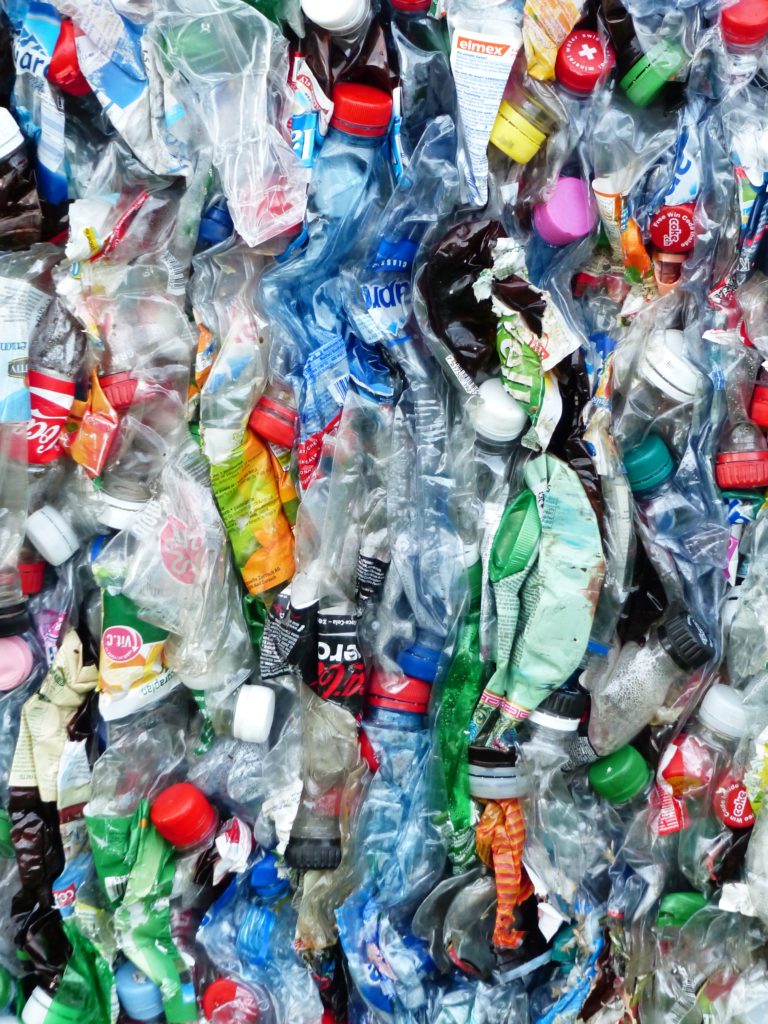In the 1960s, investing in plastics was a safe bet, and the plastics boom showed no sign of slowing down. But in 2018, the future of the plastic industry is less clear.
In the US, plastic production is ramping up as natural gas fracking has led to extremely cheap feedstocks for plastic production. The plastic industry is capitalizing on the shale gas boom by investing hundreds of billions of dollars in facilities to expand production, which is expected to increase one-third by 2025. And as the frenzy over shale gas continues, eyes are on Appalachia as fossil fuel’s newest crown jewel. Right now, Shell is constructing a $6 billion dollar ethane cracker in Pennsylvania, while Energy Transfer Partners — the company behind the Dakota Access Pipeline — is in the process of constructing new pipelines to transport these fracked materials to eastern ports. The petrochemical industry is touting economic development and job creation as reason to continue expansion around the Marcellus Shale formation, but does the public actually stand to benefit from all this plastic production?
Many of the “exciting employment opportunities” created by new facilities are low-paying jobs with limited mobility. And while a few hundred people “benefit” from jobs inside plastic facilities, thousands more across the region are seriously harmed by these operations. Plastic processing emits dangerous air pollutants, posing health risks that go far beyond the alleged benefits of many petrochemical projects. Emissions at certain stages in plastic production are known to be carcinogenic and can degrade the air quality of entire regions. In fact, one Shell cracker near Pittsburgh, Pennsylvania, is expected to release emissions that lower the city’s air quality to 1999 pollution levels. The plastic industry’s optimism in the face of these serious health risks is not only careless, but downright irresponsible.
In response to these impacts, community activists are working together to protect their right to a healthy environment. In Texas, Portland Citizens United has been educating communities and protesting plants. We’ve seen this before: In 1998, residents of the so-called “Cancer Alley” decided they didn’t need another plant in their community, and community members in Convent, Louisiana, successfully opposed a proposed polyvinyl chloride plant. Even without protection from the Louisiana Department of Environmental Quality and the US Environmental Protection Agency, overwhelming public concern and persistent activism shut down the proposed Shintech plant, which would have released 611,700 pounds of toxic, carcinogenic contaminants into the air every year. But ignoring community pushback is only one of Big Plastic’s blindspots.
As community activism challenges Gulf and Appalachian petrochemical expansion, the plastic industry faces another threat: itself. Investment in petrochemicals is increasingly risky, and the industry is in danger of stretching itself too thin. As Appalachian infrastructure booms, competition will increase with the Gulf coast. Without sufficient markets at home, the US petrochemical industry will need to export a substantial portion of its products. Stakeholders are already casting doubt on the industry’s optimistic projections, evidenced by Dow Chemical’s 2017 decision to reject price increases for polyethylene due to insufficient market demand.
The assumption that global demand will absorb oversupplied products is especially doubtful as the world acts to address climate change. The “business-as-usual” agenda of the fossil fuel industry is at odds with our rapidly changing climate reality and evolving climate policy. As action on the Paris Climate Agreements shifts us away from fossil fuels, the entire economy is shifting away from the unsustainable, energy-intensive lifecycle of plastic. Moreover, the international community has also begun directly addressing the plastic problem, and efforts such as the UN Environment Assembly’s “Resolution on Marine Litter and Microplastics” are in stark contrast to a world of limitless growth in plastic production. Similarly, the EU is moving forward with its Strategy for Plastics in the Circular Economy, which will emphasize recycled plastic packaging and reduced single-use plastics. As countries adopt new strategies to address plastic pollution and climate change, there will likely be a change in consumer demand for plastic products and an increasingly expensive supply of fossil fuel-sourced chemical feedstocks to create plastic.
Despite pressure from all sides, the plastic industry appears blind to its own recklessness. Industry predictions remain hopeful, but the future of plastic production is not set in stone. Refusing to recognize demand-side concerns and limitations cropping up on national and global stages and dismissing the real impacts of community resistance will prove to have major consequences. The world is changing, and it’s time for Big Plastic to change, too.
By Sarah Aron, Communications Intern
Originally posted on October 25, 2018

